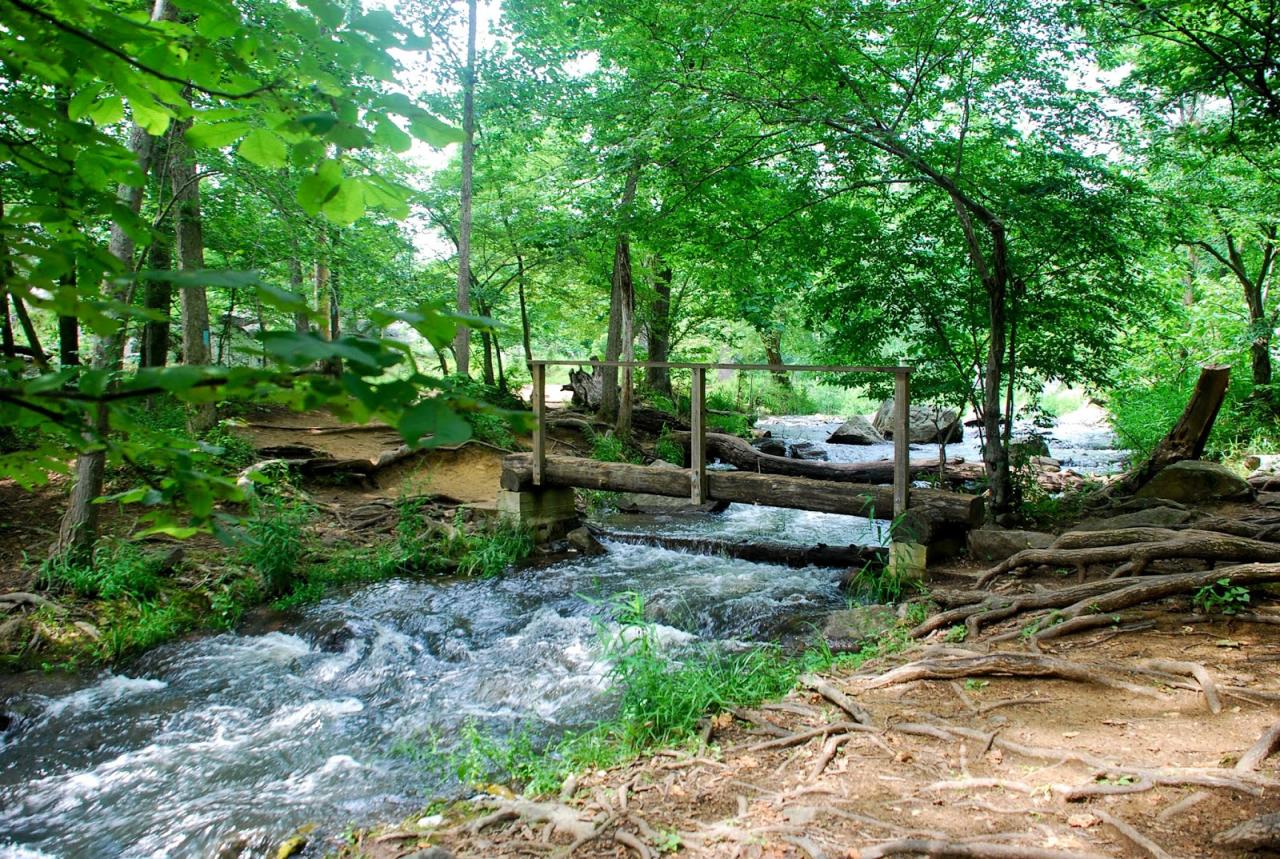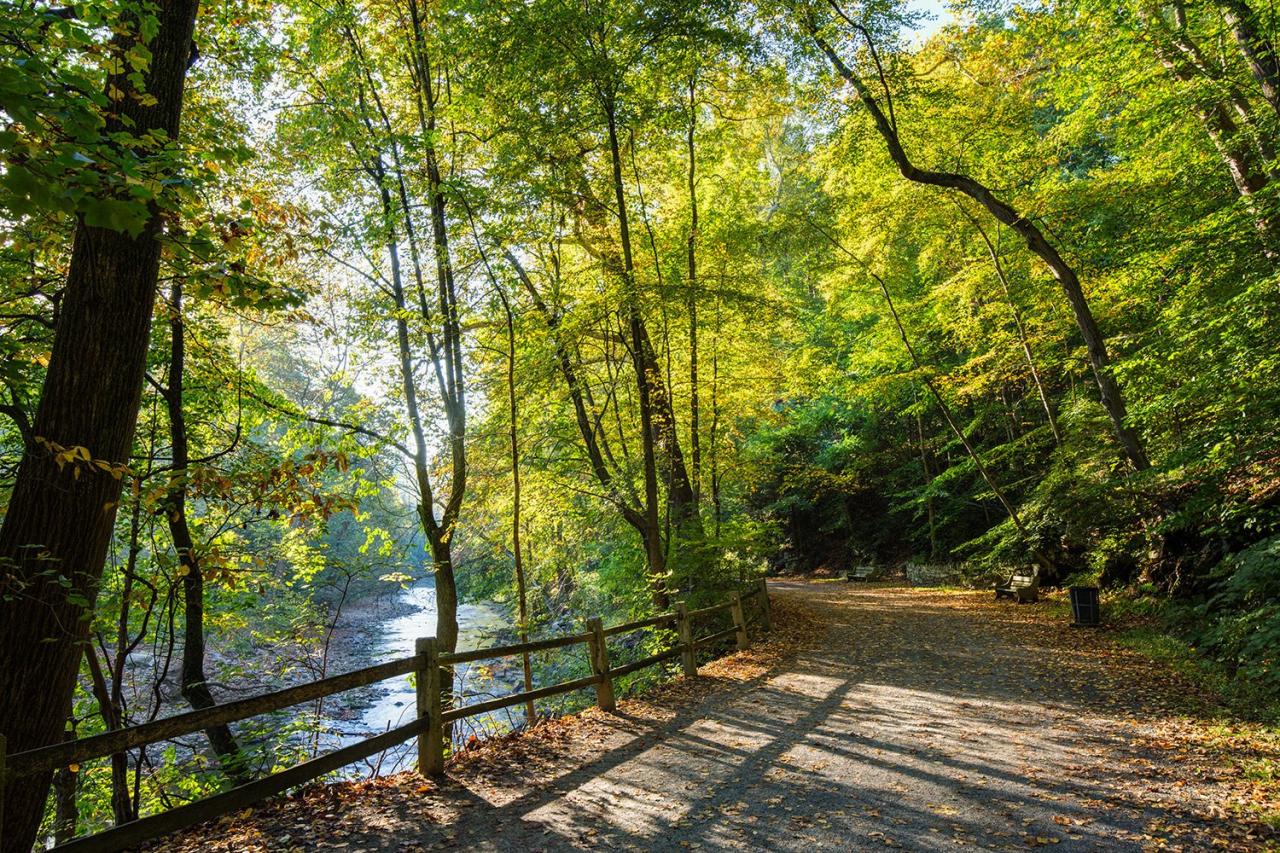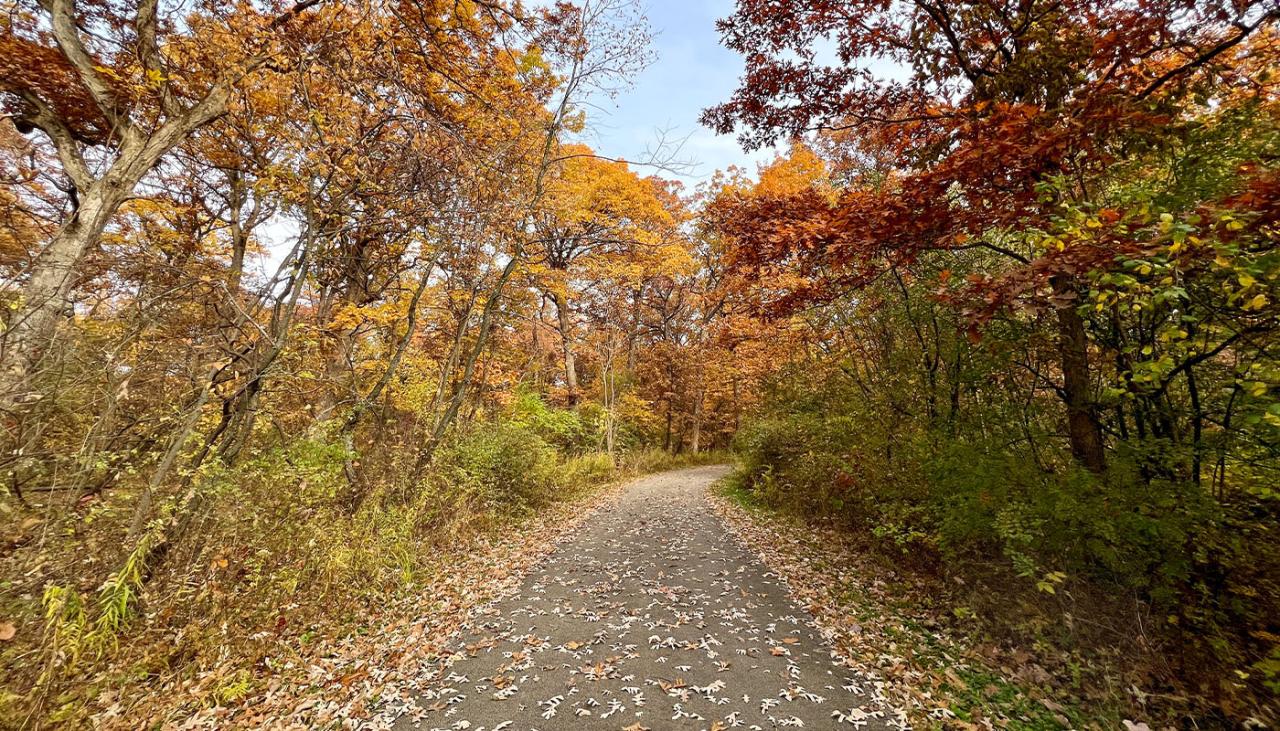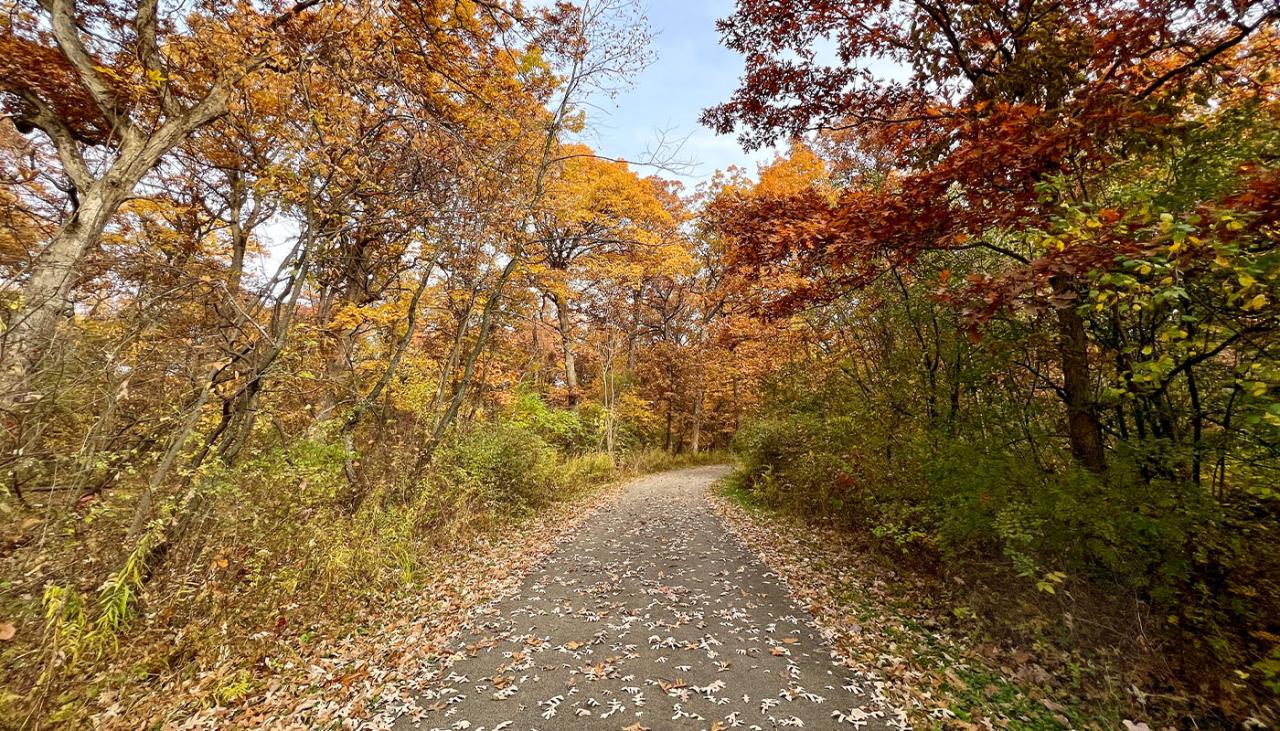Hidden gem nature walks near my area with less crowded trails? Sounds like a fairy tale, right? Well, grab your hiking boots, because this isn’t some whimsical fantasy – it’s a real-life adventure waiting to happen! Forget the madding crowds jostling for space on the well-trodden paths. We’re diving into the secret world of secluded trails, whispering waterfalls, and breathtaking vistas known only to a select few.
Prepare to unearth nature’s best-kept secrets, right in your own backyard (or, you know, a reasonable driving distance). We’ll uncover hidden pathways, navigate tricky terrain (metaphorically, mostly!), and maybe even stumble upon a mythical creature or two (okay, probably not, but a friendly squirrel is always a possibility!). Get ready to ditch the tourist traps and embrace the untamed beauty of nature’s less-traveled routes.
This guide will equip you with the tools and resources to find those elusive, less-crowded trails, transforming your next nature walk into an unforgettable experience. We’ll explore how to define “near,” decipher trail popularity data, and identify the hallmarks of a true hidden gem. Think stunning landscapes, unique wildlife encounters, and a peaceful escape from the everyday hustle.
Get ready to discover your own personal slice of paradise.
Defining “Near My Area”: Hidden Gem Nature Walks Near My Area With Less Crowded Trails

Figuring out what constitutes “near my area” for a nature walk is trickier than it sounds. It’s not just about throwing a dart at a map; we need a precise, yet flexible, definition to ensure we’re suggesting trails that are actually accessible to our users. This involves a blend of technology and user understanding.The system needs to intelligently interpret the user’s location and translate that into a practical search radius.
We’re aiming to provide relevant recommendations, not send someone on a cross-country hike when they were hoping for a leisurely stroll in the nearby park.
Search Radius Determination
The core of our “near my area” functionality hinges on defining a reasonable search radius. We’ll use a flexible approach, offering users the option to select a radius of either 10, 25, or 50 miles (approximately 16, 40, or 80 kilometers). This allows users to tailor the search to their desired level of exploration – a quick afternoon jaunt versus a weekend adventure.
Tired of battling crowds on the weekend hike? I’ve found some seriously awesome hidden gem nature walks near me with less crowded trails – perfect for escaping the madding throng. But if you’re itching for a bit more history with your scenery, check out this link for scenic walking trails near me with historical landmarks or points of interest: scenic walking trails near me with historical landmarks or points of interest.
Then, get back to those peaceful, practically deserted trails – you deserve the solitude!
The default setting will be 25 miles, striking a balance between proximity and variety. For example, a user in a suburban area might choose a smaller radius, while someone in a more rural setting might opt for a larger one.
Location Determination Methods
We’ll employ a two-pronged approach to determine user location:
- IP Address Geolocation: This provides a rough estimate of the user’s location. While not perfectly accurate (IP addresses are assigned to geographic regions, not specific addresses), it serves as a valuable starting point and default location. This is particularly useful for users who haven’t explicitly shared their location.
- User-Provided Location Input: For greater accuracy, users can manually enter their location via a search bar or by selecting their location on an interactive map. This allows for precise targeting of trails near their specific address or a chosen point of interest. This method prioritizes user input over IP address geolocation if both are available.
Handling Ambiguous Location Inputs
Sometimes, users might provide ambiguous input, such as “Central Park” (which exists in many cities). To address this, we’ll implement a smart search feature that:
- Prioritizes User-Provided Locations: If a user enters a specific address, the system uses that as the primary location.
- Uses Geocoding: If the input is ambiguous, the system employs geocoding to identify potential locations. Geocoding translates textual descriptions into geographic coordinates. This allows the system to present the user with a list of possible locations to select from, resolving ambiguity.
- Defaults to IP Address: If geocoding fails to provide a reasonable match, the system defaults to the IP address location as a fallback, providing a less precise, but still useful, starting point.
Identifying Less Crowded Trails

Discovering hidden nature gems often means navigating away from the well-trodden paths. But how do you find those less-traveled trails that offer solitude and serenity without turning your hike into a frustrating game of trailhead Tetris? Fear not, intrepid explorer! This section unveils the secrets to unearthing those delightfully uncrowded escapes.Finding the perfect balance between accessibility and solitude requires a bit of detective work, but it’s a treasure hunt well worth the effort.
Tired of battling crowds on the weekend hike? I’ve found some seriously awesome hidden gem nature walks near me with less crowded trails – perfect for escaping the madding throng. But if you’re itching for a bit more history with your scenery, check out this link for scenic walking trails near me with historical landmarks or points of interest: scenic walking trails near me with historical landmarks or points of interest.
Then, get back to those peaceful, practically deserted trails – you deserve the solitude!
We’ll explore reliable resources and methods to help you pinpoint those less-visited trails, turning your next hike into a blissful escape from the bustling crowds.
Trail Usage Data Resources
Several resources can help you gauge trail popularity. Park websites often provide visitor numbers or anecdotal information about trail usage, although this data might not always be consistently updated or detailed. Many hiking apps, such as AllTrails and Hiking Project, allow users to rate trails and leave comments, offering a glimpse into the typical crowd levels. Pay attention to user reviews – comments mentioning “crowded” or “busy” are clear indicators.
Remember, however, that app data is user-generated and might not always reflect the complete picture, especially for lesser-known trails. For example, a trail with fewer reviews might simply be less popular or less digitally documented, rather than inherently uncrowded.
Assessing Trail Popularity
Analyzing available data requires a discerning eye. Look beyond simple star ratings. Dive into the comments section of hiking apps; a trail with a high average rating but numerous comments about crowds might be less ideal than a slightly lower-rated trail with comments suggesting a more peaceful experience. Consider the time of year and day of the week; trails popular on weekends might be much quieter mid-week or during the off-season.
Tired of battling crowds on the weekend hike? I’ve found some seriously awesome hidden gem nature walks near me with less crowded trails – perfect for escaping the madding throng. But if you’re itching for a bit more history with your scenery, check out this link for scenic walking trails near me with historical landmarks or points of interest: scenic walking trails near me with historical landmarks or points of interest.
Then, get back to those peaceful, practically deserted trails – you deserve the solitude!
For example, a mountain trail in Colorado might be packed on a sunny Saturday in July but practically deserted on a Tuesday in November. The more data points you consider, the better your assessment will be.
Trail Ranking Method
To effectively rank trails, we can use a simple system combining crowd level and accessibility. Let’s assign a score from 1 to 5 for both factors, with 1 being the least crowded/most accessible and 5 being the most crowded/least accessible. For example:
| Trail Name | Crowd Level (1-5) | Accessibility (1-5) | Overall Score |
|---|---|---|---|
| Whispering Pines Trail | 2 | 3 | 5 |
| Boulder Creek Path | 4 | 1 | 5 |
| Hidden Falls Trail | 1 | 2 | 3 |
The “Overall Score” is calculated by adding the Crowd Level and Accessibility scores. Lower scores indicate trails that are both less crowded and more accessible. Remember that this is a subjective ranking; your personal preferences might influence your interpretation of “accessibility.” A trail rated as moderately accessible might still be perfect for you, while a highly accessible trail might be too easy for your desired level of challenge.
Discovering Hidden Gem Nature Walks
Unearthing those secret, less-trodden paths – the kind where you’re more likely to encounter a curious squirrel than a selfie stick-wielding crowd – is a treasure hunt for the nature-loving soul. It’s about escaping the well-worn tourist trails and discovering places that feel genuinely wild and untouched. This isn’t just about finding a walk; it’s about finding an experience.Defining a “hidden gem” nature walk goes beyond simply finding a trail with fewer people.
It’s about the holistic experience. It’s a confluence of factors that create a truly memorable adventure.
Escape the urban jungle and discover hidden gem nature walks near my area – less crowded trails mean more peace and quiet! Need extra cash to fund those hiking boots and gourmet trail mix? Check out how to make money online for beginners for some savvy ideas. Then, get back to exploring those breathtaking, secluded paths – your wallet and your soul will thank you.
Criteria for Defining a Hidden Gem Nature Walk
The perfect hidden gem walk boasts a captivating blend of features. Imagine a trail winding through a vibrant tapestry of wildflowers, leading you to a breathtaking vista – a panoramic view that stretches out before you like a masterpiece painted by nature itself. Perhaps it’s a path that whispers tales of a bygone era, with historical remnants scattered along its length, hinting at forgotten stories.
Or maybe it’s a haven for unique wildlife, a place where you might spot a rare bird or a shy creature peeking from behind a mossy rock. The key is a combination of these elements, creating an unforgettable experience. A truly hidden gem might offer stunning waterfalls cascading down rocky cliffs, a tranquil stream whispering secrets to the wind, or an ancient forest teeming with life.
Resources for Discovering Lesser-Known Trails
Finding these hidden gems requires a bit of detective work, but the rewards are well worth the effort. Local knowledge is key. Don’t underestimate the power of a good old-fashioned conversation with locals. A chat with a friendly shopkeeper, librarian, or even a park ranger can unlock a world of secret trails. Beyond personal connections, the digital age provides a wealth of resources.
Local blogs dedicated to outdoor adventures often feature off-the-beaten-path trails, providing detailed descriptions and insider tips. Online forums and hiking groups, particularly those specific to your region, are treasure troves of information, with experienced hikers sharing their discoveries and recommendations. Social media platforms can also be surprisingly useful; searching for location-specific hashtags, such as #[YourArea]Hiking or #[YourRegion]HiddenGems, might reveal hidden gems others have uncovered.
Verifying Information from Discovered Resources
While online resources are invaluable, it’s crucial to verify the information you find. Always cross-reference details from multiple sources to ensure accuracy. Look for trail maps or GPS coordinates to confirm the location and length of the trail. Check recent reviews or comments from other hikers to get an up-to-date assessment of trail conditions and accessibility. If possible, contact local authorities like park services or conservation groups to confirm trail information and any potential restrictions or hazards.
Remember, safety is paramount; verifying information helps ensure a safe and enjoyable experience.
Presenting the Information
So, you’re ready to ditch the crowded tourist traps and discover nature’s hidden gems? Excellent! We’ve scoured the area for less-trafficked trails, and the results are in. Prepare to be amazed (and maybe slightly muddy). The following tables and lists detail our findings, ensuring your next nature walk is a blissful escape, not a sweaty battle for elbow room.
Trail Information Table
This table provides a quick overview of each trail, highlighting key features to help you choose your next adventure. Remember, crowd levels are estimates based on our observations and can vary depending on the season and day of the week.
Tired of battling crowds on the weekend hike? I’ve found some seriously awesome hidden gem nature walks near me with less crowded trails – perfect for escaping the madding throng. But if you’re itching for a bit more history with your scenery, check out this link for scenic walking trails near me with historical landmarks or points of interest: scenic walking trails near me with historical landmarks or points of interest.
Then, get back to those peaceful, practically deserted trails – you deserve the solitude!
| Trail Name | Location | Difficulty | Estimated Crowd Level | Description |
|---|---|---|---|---|
| Whispering Pines Trail | Just outside Willow Creek | Easy | Low | A gentle stroll through a sun-dappled pine forest, perfect for a relaxing afternoon. |
| Rocky Ridge Ramble | Near Eagle Peak | Moderate | Medium | A slightly more challenging hike with some rocky sections, rewarding you with stunning panoramic views. |
| Hidden Falls Hike | Beyond Silver Stream | Difficult | Low | A strenuous trek leading to a breathtaking waterfall, best suited for experienced hikers. |
Trail Specifics
Each trail offers a unique experience. Below, we detail the unique features and potential challenges you might encounter.
- Whispering Pines Trail: Features a babbling brook perfect for a picnic lunch. Potential challenge: Slightly uneven terrain in some areas. Expect mostly flat, well-maintained paths.
- Rocky Ridge Ramble: Offers spectacular views of the valley below. Potential challenges: Steep inclines and rocky sections require sturdy footwear. Expect some elevation changes and less-maintained paths.
- Hidden Falls Hike: Leads to a secluded waterfall with a natural swimming hole (weather permitting!). Potential challenges: Strenuous climb, some scrambling required. Expect a challenging climb with potential for uneven and steep terrain.
Trail Difficulty Visual Representation
We’ve implemented a simple color-coded system to represent trail difficulty:
- Easy (Green): Suitable for all fitness levels. Think leisurely stroll.
- Moderate (Yellow): Some inclines and uneven terrain. A good level of fitness is recommended.
- Difficult (Red): Strenuous hike with steep inclines and challenging terrain. Only for experienced hikers.
Illustrating the Nature Walks
Prepare yourself for a sensory explosion! We’re about to embark on a virtual journey through some truly spectacular, yet surprisingly uncrowded, nature walks near you. Forget the throngs of tourists; these hidden gems offer a chance to reconnect with nature on your own terms, breathing in the crisp air and letting the tranquility wash over you.These descriptions aim to transport you to these locations, painting vivid pictures of what awaits you on each trail.
Escape the urban jungle with hidden gem nature walks near me – less crowded trails are my jam! But if Fido needs to stretch his legs too, check out the amazing off-leash dog parks with walking trails near my current address: off-leash dog parks with walking trails near my current address. Then, it’s back to blissful solitude on those quieter, less-trafficked nature paths for some serious peace and quiet (and maybe a sneaky squirrel sighting!).
We’ll focus on the sights, sounds, smells, and even the textures you might encounter, ensuring you can almost feel the earth beneath your feet.
Tired of battling crowds on the weekend hike? I’ve found some seriously awesome hidden gem nature walks near me with less crowded trails – perfect for escaping the madding throng. But if you’re itching for a bit more history with your scenery, check out this link for scenic walking trails near me with historical landmarks or points of interest: scenic walking trails near me with historical landmarks or points of interest.
Then, get back to those peaceful, practically deserted trails – you deserve the solitude!
Whispering Pines Trail
Imagine this: sunlight dappling through a canopy of ancient pines, their needles releasing a heady, earthy fragrance that fills the air. The trail itself is a soft carpet of pine needles, muffling your footsteps as you walk. The sound of the wind whispering through the branches is almost hypnotic, punctuated only by the occasional chirp of a bird or the rustle of a squirrel scampering through the undergrowth.
You might spot a shy deer grazing peacefully in a clearing, its coat the color of autumn leaves. The air is cool and crisp, carrying the scent of damp earth and pine. Wildflowers, delicate and vibrant, peek out from beneath the pines, adding splashes of color to the otherwise muted palette. The trail winds gently uphill, offering occasional glimpses of a distant valley bathed in sunlight.
Tired of battling selfie-stick-wielding hordes on the trail? Escape the crowds and discover hidden gem nature walks near my area with less crowded trails! For a broader view, check out the best scenic hiking trails near my current location to get inspired, then ditch the crowds and find your own secret woodland wonderland. Seriously, less people means more squirrels, and more squirrels means more fun! Back to those blissful, less-crowded hidden gem nature walks near my area.
Silver Stream Stroll
This trail follows a babbling brook, its waters reflecting the sky like a shimmering mirror. The air is filled with the sound of rushing water, a constant, soothing melody. The path itself is uneven, sometimes rocky, sometimes muddy, requiring a bit more attention to your footing. The abundance of moisture creates a lush, verdant environment. Ferns unfurl their fronds, creating a tapestry of green, while wildflowers thrive along the banks.
Dragonflies dart across the water’s surface, their iridescent wings catching the light. The smell of damp earth and decaying leaves mingles with the fresh scent of water, creating a uniquely earthy aroma. The light is constantly shifting, dancing on the water’s surface and creating patterns on the forest floor. Listen carefully, and you might hear the gentle croaking of frogs hidden amongst the reeds.
Sunset Ridge Ramble
This trail offers breathtaking panoramic views, especially during sunset. As the sun dips below the horizon, the sky explodes in a riot of color – oranges, reds, purples, and pinks – painting the landscape in breathtaking hues. The air is cool and carries the scent of wildflowers and dry grass. The trail itself is relatively flat, making for an easy walk, but the expansive views are the real reward.
You might spot hawks circling overhead, their silhouettes stark against the fiery sky. The sound of the wind whistling through the grasses adds to the dramatic ambiance. The flora is varied, with hardy grasses and wildflowers dominating the landscape. The feeling of vastness and freedom is palpable, a perfect place to reflect and appreciate the beauty of nature.
Safety Considerations

Embarking on a nature walk sounds idyllic, but Mother Nature, while beautiful, can be unpredictable. A little preparation goes a long way in ensuring a safe and enjoyable adventure on those less-traveled paths. Remember, even seemingly innocuous trails can present challenges, so it’s vital to be prepared for a range of scenarios.Preparing for a safe hike involves planning and packing appropriately.
This includes checking the weather forecast, informing someone of your hiking plans, and carrying essential gear. Neglecting these steps could transform a relaxing stroll into an unexpected ordeal.
Pre-Hike Preparations
Before you even lace up your boots, several steps can significantly reduce your risk. Thorough planning minimizes potential problems and allows for a more relaxed and enjoyable experience. This includes checking the weather forecast for potential rain, extreme temperatures, or strong winds. Knowing the trail’s difficulty level, length, and any potential hazards beforehand is crucial. It’s also essential to let someone know your planned route and estimated return time.
This simple step can be a lifesaver in case of an emergency.
Essential Equipment
The necessity of certain equipment depends on the trail conditions and the time of year. For a basic day hike on a well-maintained trail, you might only need water, a snack, and a map. However, more challenging terrain or longer treks necessitate a more comprehensive kit.
- Navigation: Map, compass, GPS device (and knowledge of how to use them!). A paper map is essential, even if you have a GPS, as electronic devices can fail.
- Sun protection: Sunscreen, sunglasses, and a hat are crucial, especially during sunny days. Even on cloudy days, the sun’s rays can be strong enough to cause sunburn.
- Insulation: Layers of clothing are vital for adapting to changing temperatures. A waterproof outer layer is essential, even if rain isn’t forecast.
- Illumination: A headlamp or flashlight is necessary if your walk extends into the evening or if you encounter unexpected delays.
- First-aid supplies: A basic first-aid kit should include bandages, antiseptic wipes, pain relievers, and any personal medications.
- Fire starter: In case of an emergency, a lighter or waterproof matches can be vital for signaling for help or staying warm.
- Repair kit and tools: A small multi-tool can be incredibly useful for minor repairs to gear or unexpected obstacles on the trail.
- Extra food and water: Always carry more water and food than you anticipate needing. Dehydration and hunger can quickly diminish your energy and ability to cope with challenges.
Potential Hazards and Mitigation
Nature presents various hazards, ranging from minor inconveniences to serious threats. Understanding these potential risks and knowing how to handle them is key to a safe hike.
Wildlife Encounters
Many trails are shared with wildlife. Encountering animals like deer, snakes, or even bears is possible. Maintaining a safe distance, making noise to avoid surprising animals, and carrying bear spray (in bear country) are essential precautions. Never approach or feed wild animals.
Weather Conditions, Hidden gem nature walks near my area with less crowded trails
Sudden changes in weather are common, especially in mountainous areas. Be prepared for unexpected rain, strong winds, or even snow, depending on the location and season. Always check the forecast before you go and dress in layers to adapt to changing conditions.
Trail Hazards
Trails can present various obstacles, such as slippery rocks, fallen trees, or steep inclines. Wear appropriate footwear with good traction, take your time, and use trekking poles if necessary for added stability. Be aware of your surroundings and avoid risky shortcuts.
Getting Lost
Getting lost is a real possibility, especially on less-traveled trails. Always carry a map and compass, know how to use them, and stick to marked trails. If you do get lost, stay calm, find a safe place, and try to signal for help.
Closing Notes

So, there you have it – your passport to a world of serene nature walks, far from the madding crowds. Remember, the thrill of discovery is half the fun! Don’t be afraid to stray from the beaten path (metaphorically, of course – always prioritize safety!), explore uncharted territory, and let your adventurous spirit guide you. Whether you’re a seasoned hiker or a weekend wanderer, the joy of uncovering a hidden gem is a treasure all its own.
Now go forth, intrepid explorer, and find your perfect escape! Happy trails!
